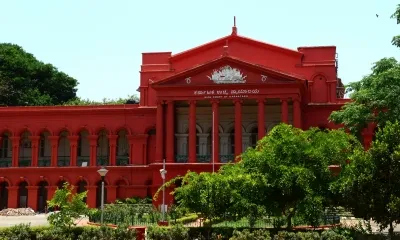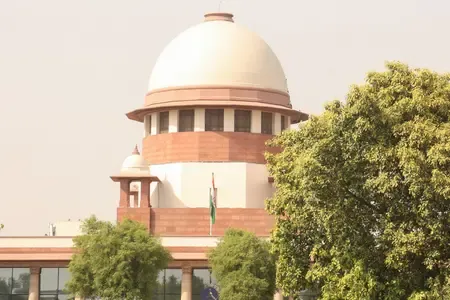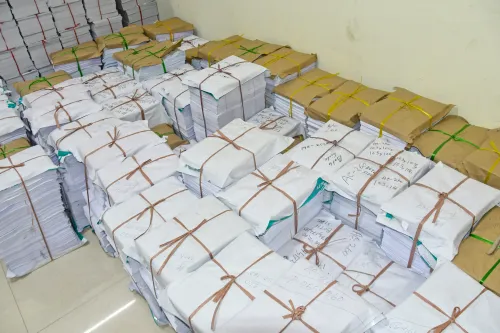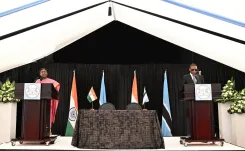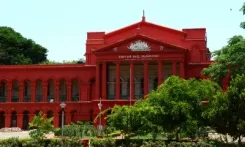What Are the High Stakes for Bihar's Political Leaders?

Synopsis
Key Takeaways
- Nitish Kumar's leadership is crucial for the Janata Dal (United).
- The RJD's performance could determine Tejashwi Yadav's future in Bihar politics.
- A close contest could reshape alliances among political parties.
- The Left's representation is under threat in the current political climate.
- Political futures of several leaders hinge on the outcome of this election.
New Delhi, Nov 12 (NationPress) Despite exit polls forecasting a win for the National Democratic Alliance (NDA) in the Bihar Assembly elections, there is a lot on the line for Chief Minister Nitish Kumar as the Electronic Voting Machines (EVMs) begin to reveal results on Friday, November 14.
Even though the Chief Minister is not contesting, he undoubtedly hopes to see the Janata Dal (United) emerge as at least the second-largest party in the Bihar Legislative Assembly.
In the 2020 Assembly elections, his party fielded 115 candidates, securing 43 seats, which placed them as the third-largest party.
Meanwhile, NDA partner Bharatiya Janata Party (BJP) secured the second-highest position with wins in 74 out of 110 constituencies.
On the other hand, the Rashtriya Janata Dal (RJD) managed to win 75 seats but lacked a majority in their alliance with the Mahagathbandhan.
Nitish Kumar, who has held the position of head of government multiple times throughout his career spanning over a decade in the last term, has chosen to remain a member of the Bihar Legislative Council.
His last victory in an Assembly election occurred in 1995 when he ran for the Harnaut Assembly seat within the Nalanda Lok Sabha constituency. Back then, he was affiliated with the Samata Party, which he co-founded with George Fernandes.
He also won from Harnaut in 1985 as a candidate from the Lok Dal led by Charan Singh.
As a Member of Parliament, Nitish Kumar has represented the Barh Lok Sabha seat five times (1989, 1991, 1996, 1998, 1999) through various political affiliations.
In 2004, he contested in two parliamentary seats, losing in Barh but emerging victorious in Nalanda. If the predictions from the exit polls come to fruition, this may mark the final term for the 74-year-old Bihar leader, although Nitish Kumar aspires to remain a prominent figure in politics even as he approaches the twilight of his career.
Meanwhile, the 36-year-old RJD leader Tejashwi Yadav, the successor to Lalu Prasad Yadav, appears eager to establish his prominence. Following the 2020 outcomes, he has urged allies to endorse him as the chief ministerial candidate of the Mahagathbandhan.
A close count on Friday may sustain his leadership in Bihar, but if the opposition coalition falls below 90 and the RJD ranks third in the race, this could raise concerns among his allies.
These include the Congress and the Left, neither of which holds significant influence in Bihar politics. However, the Left, particularly the Communist Party of India (Marxist Leninist) under General Secretary Dipankar Bhattacharya, has made strides in the state after experiencing a decline since Lalu Prasad Yadav utilized the Mandal Commission recommendations in electoral strategies.
In the 2020 elections, the Left contested in 29 constituencies and secured 16 seats, with Bhattacharya's party claiming 12 of the 19 seats they contested.
If the combined representation of the Left parties dwindles to a single-digit figure, this would spell trouble for them, similar to what occurred in neighboring West Bengal. However, the opposition can always attribute failures to the EVMs and the Election Commission's Special Intensive Revision (SIR) of electoral rolls.
Moreover, the political trajectory of Prashant Kishor is also at stake; should his Jan Suraaj Party end up with zero to three seats, he might need to reconsider his alliances.
At present, he insists on maintaining independence, even if his MLAs—if any—choose to exit later, echoing lessons from the All India Majlis-e-Ittehadul Muslimeen (AIMIM), which won five seats in 2020 but failed to keep its candidates.
Two other emerging leaders face their own challenges. Chirag Paswan of the Lok Janshakti Party (Ram Vilas) must demonstrate his capability by securing a few wins following a disappointing performance in 2020.
Nevertheless, he remains optimistic about achieving a perfect score in the 2024 Lok Sabha elections, where his party won all five contested seats.
Similarly, Tej Pratap must validate his assertion of having public support after being suspended from the RJD and distanced from the Lalu Prasad Yadav family.

